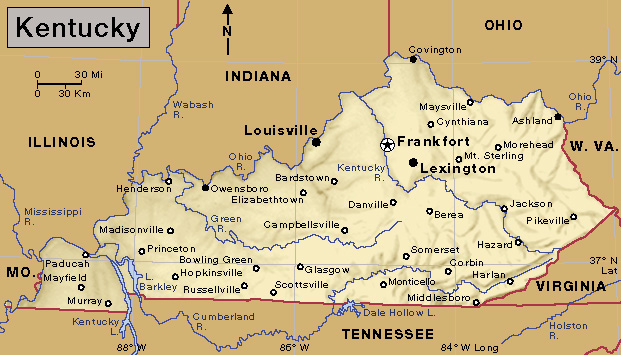Lexington (pop. 322,570; met. area pop. 516,811), Kentucky, is one of the chief trading centers for tobacco in the United States and an important market for race horses. It is also one of Kentucky’s largest cities.

Lexington was founded in 1775. Eight pioneers were building the first cabin on the site when they heard about the opening battle of the American Revolution (1775-1783). They named the settlement for the battle, which was fought in Lexington, Massachusetts.
Description.
Lexington is the county seat of Fayette County. Race horses and burley tobacco are raised nearby. The grass and water of the area around Lexington are rich in minerals that give horses strong bones and muscles. Auction markets in the Lexington area handle hundreds of Standardbred and Thoroughbred horses every year.
The manufactured products in the Lexington metropolitan area include automobile parts, computer printers, fabricated metal goods, printed materials, and processed foods. Automobiles are manufactured in nearby Georgetown.
Lexington is the home of the University of Kentucky and Transylvania University. Transylvania, chartered in 1780, was the first college west of the Allegheny Mountains. Lexington’s museums include Ashland, the home of the famous American statesman Henry Clay; and the International Museum of the Horse.

History.
Shawnee Indians hunted in what is now the Lexington area when whites first settled there in 1775. The pioneers abandoned Lexington in 1776 but settled there permanently in 1779. Lexington served as the temporary state capital in 1792.
By the early 1800’s, horse farms had spread across the rolling meadows of the Lexington area. Lexington was incorporated as a city in 1832. Tobacco became important in the area after the 1860’s, when growers developed a variety of the plant especially suited to the soil and climate there.

The Lexington area began to grow rapidly as a manufacturing center during the 1950’s. In 1974, the city combined its government with that of Fayette County. The area became known as Lexington-Fayette Urban County. Lexington Center (now called Central Bank Center), a downtown civic center, opened in 1976. It includes a sports arena, a convention hall, a hotel, and stores. An automobile manufacturing plant in Georgetown, near Lexington, began operations in 1988. In 1998, Hamburg Place, a large shopping center, opened near the intersection of Interstate Highways 75 and 64. Lexington became Kentucky’s largest city in the 1990’s, when its population grew to be greater than that of Louisville. But in 2003, Louisville merged with Jefferson County and surpassed Lexington as the largest city in the state.
